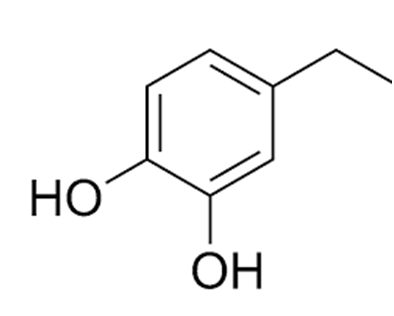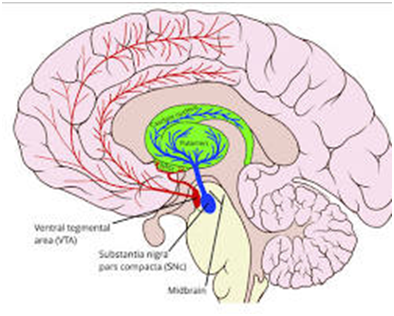Dopamine, a brain chemical acting as a messenger, is a key player in motivation, pleasure, learning, and even movement. Nicknamed the "feel-good" chemical, it rewards us with pleasurable sensations to reinforce behaviors we enjoy.

Dopamine chemical structure
Dopamine originates in two key regions of the midbrain: the substantia nigra and the ventral tegmental area (VTA). From these hubs, it navigates through dopamine pathways, akin to bustling highways, disseminating its effects across various regions of the brain and body.
Dopamine is a neurotransmitter, a chemical messenger that plays a crucial role in the brain's reward system and in regulating movement and emotional responses. It is also called the currency of the brain. It's often associated with feelings of pleasure, motivation, and reinforcement. Dopamine is involved in various functions, including mood regulation, attention, learning, and the control of voluntary movements. It's produced in several areas of the brain, particularly in the substantia nigra and the ventral tegmental area. Dysfunction in the dopamine system has been implicated in various neurological and psychiatric disorders, such as Parkinson's disease, schizophrenia, and addiction.
Dopamine is a neurotransmitter, which is a type of chemical messenger in the brain. It plays a crucial role in various brain functions, including movement, motivation, reward, and pleasure. Dopamine is produced in several areas of the brain, including the substantia nigra and the ventral tegmental area.
In the brain's reward system, dopamine is released in response to pleasurable activities or stimuli, reinforcing behaviors that are necessary for survival, such as eating and socializing. It is often associated with feelings of pleasure, satisfaction, and motivation. However, dopamine also plays a role in other functions, such as motor control, mood regulation, and cognition.
Imbalances in dopamine levels or dysfunctions in the dopamine system have been linked to various neurological and psychiatric disorders, including Parkinson's disease, schizophrenia, addiction, and attention deficit hyperactivity disorder (ADHD). Medications targeting the dopamine system are often used to treat these.

Dopamine works as a chemical messenger in the brain, carrying signals between neurons. Here's a breakdown of the process:
1. Production: Dopamine is produced in specific areas of the brain, namely the substantia nigra and ventral tegmental area (VTA) located in the midbrain.
2. Storage:
Once produced, dopamine is stored in tiny sacs within these neurons until it's needed.
3. Release:
When triggered by a pleasurable experience or anticipation of reward, dopamine is released from the storage sacs into the synapse, a small gap between neurons.
4. Binding:
Dopamine molecules then travel across the synapse and bind to specific receptor sites on neighboring neurons.
5. Signal Transmission:
Binding to the receptors triggers electrical signals to travel through the receiving neuron, carrying the message to different regions of the brain.
6. Reuptake:
After delivering its message, dopamine is either reabsorbed by the sending neuron or broken down by enzymes in the synapse.
This entire process is very quick, happening in milliseconds. The amount of dopamine released and the type of receptors it binds to determine the specific effects it has on the brain and body.


You must be logged in to post a comment.